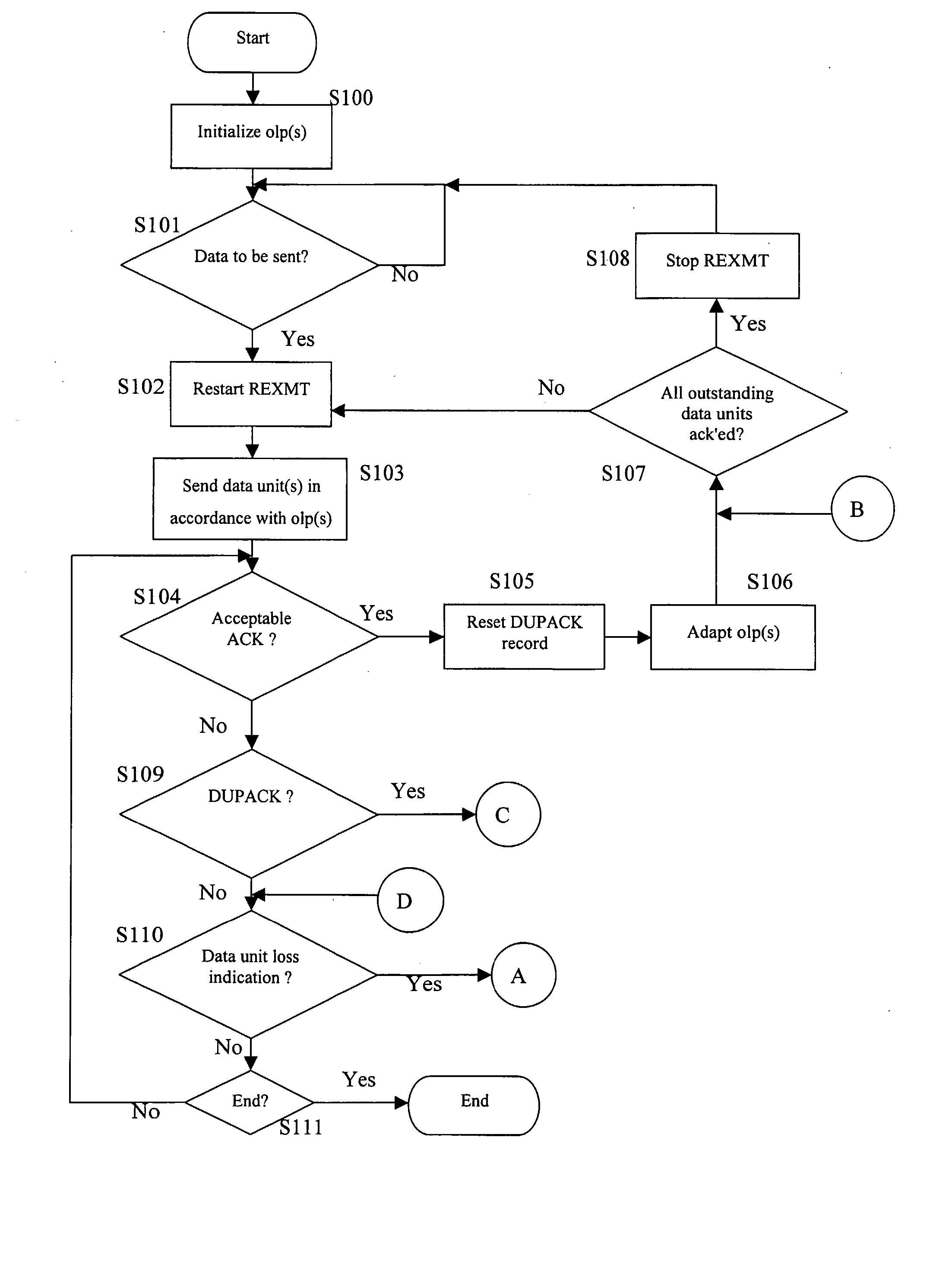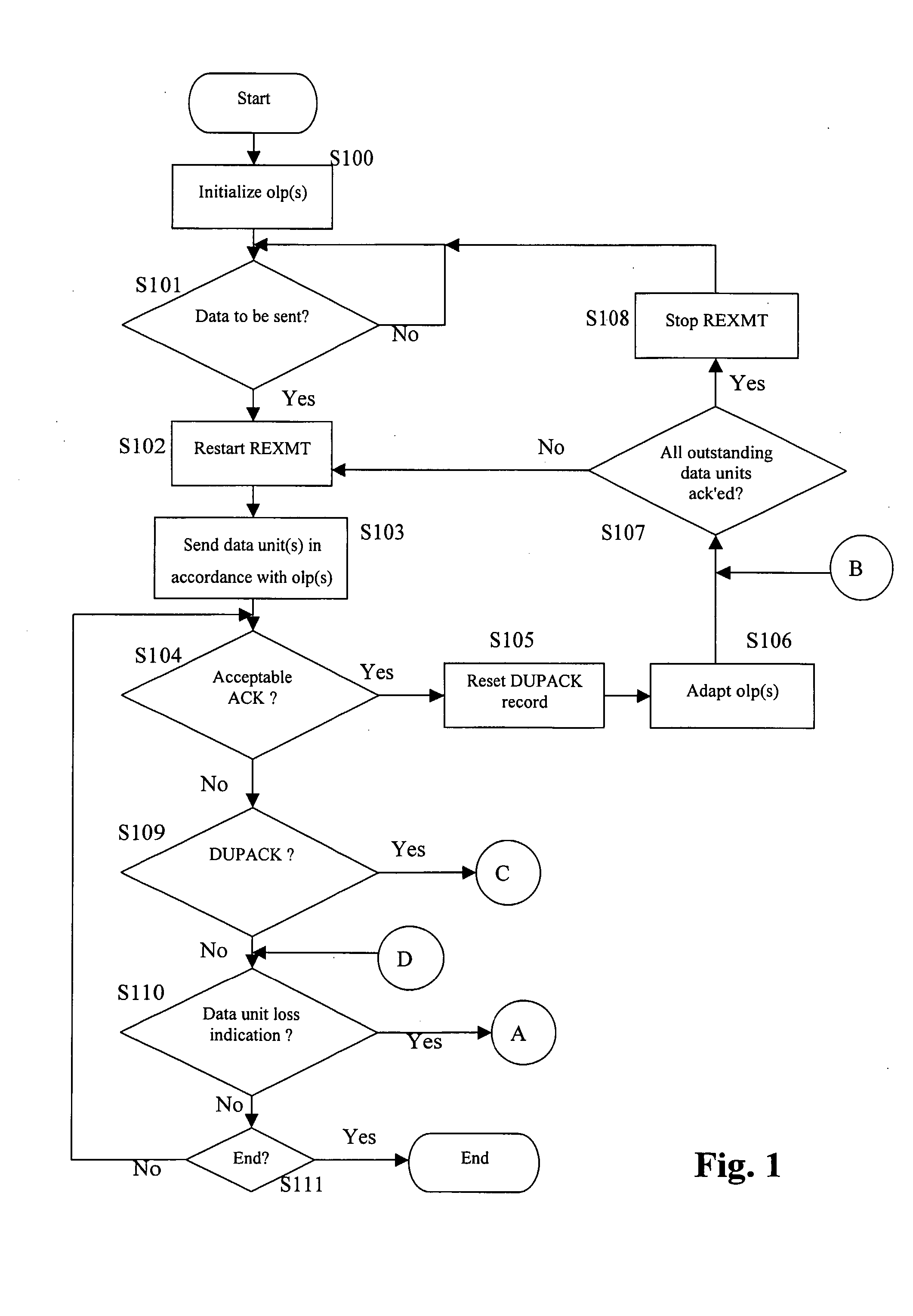Data Unit Sender Control Method
a data unit and sender technology, applied in data switching networks, high-level techniques, frequency-division multiplexes, etc., can solve the problems of limit on how much data can be sent per rtt, limit rate, etc., to improve flow control, improve congestion window, and adapt to the situation better
- Summary
- Abstract
- Description
- Claims
- Application Information
AI Technical Summary
Benefits of technology
Problems solved by technology
Method used
Image
Examples
Embodiment Construction
[0050] In the following, the description will make reference to specific protocol layers, such as the link layer and the network layer, and to specific protocols, such as TCP, but it should be noted that the present invention is by no means restricted to such specific layers or specific protocols, as it can be applied in the context of any data unit sender that acts as a sending peer of a protocol that uses cumulative acknowledgments.
[0051] Nonetheless, the concept of the present invention can preferably be applied to TCP or a TCP-like protocol. A TCP-like protocol is a communication protocol that is like TCP at least in the following characteristics: the flow control is window-based, the sender is arranged to send data units in a sequence, each data unit carrying a sequence position identifier, and the data unit receiver is arranged to acknowledge the correct receipt of data units with acknowledgment messages that carry the sequence position identifier indicative of the last data ...
PUM
 Login to View More
Login to View More Abstract
Description
Claims
Application Information
 Login to View More
Login to View More - R&D
- Intellectual Property
- Life Sciences
- Materials
- Tech Scout
- Unparalleled Data Quality
- Higher Quality Content
- 60% Fewer Hallucinations
Browse by: Latest US Patents, China's latest patents, Technical Efficacy Thesaurus, Application Domain, Technology Topic, Popular Technical Reports.
© 2025 PatSnap. All rights reserved.Legal|Privacy policy|Modern Slavery Act Transparency Statement|Sitemap|About US| Contact US: help@patsnap.com



